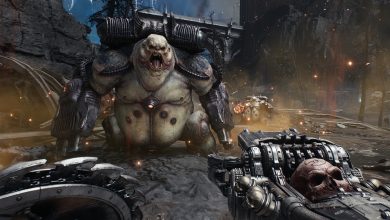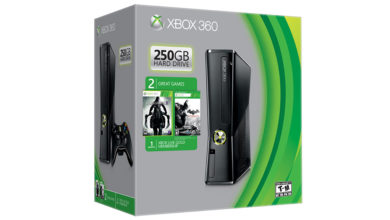Taking time off from the Yakuza series, director Toshihiro Nagoshi’s mandate with Binary Domain quite evidently was to make a game that would succeed in the West. The Holy Grail as it were; and in this day and age, that’s a third-person cover-based squad shooter. Binary Domain quite happily snuggles itself into that deceptively simple straitjacket previously well worn by the likes of Gears of War. Indeed, the promo videos make it almost look like an identikit shooter that has nothing to offer the jaded gamer.
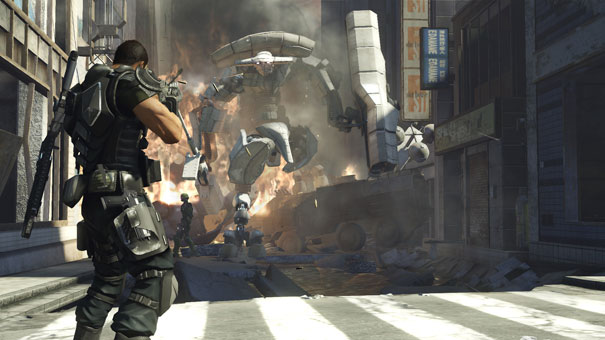
Thankfully, that couldn’t be further from the truth. Yes, it’s all of those things, but running through its veins is a special kind of insanity. Set in a dystopian future (right.), where a revised Geneva Convention governs robotics and artificial intelligence, you play Dan Marshall, an American member of a multinational spec–ops unit (also known as a Rust Crew). These Rust Crews are tasked with investigating breaches of the new Geneva Convention, or more specifically, the creation of robots with advanced AI (called Hollow Children in the Binary Domain universe) that think of themselves as human.
And so Dan and Big Bo (more on him later) land up on the shores of Tokyo, a city that’s borne the brunt of collective environmental neglect. Most of the lower reaches of the metropolis have been left flooded, and the garden rejects of post-apocalyptic society inhabit the parts that are still above water. The rich, on the other hand, have built themselves a spanking new high tech city above the clouds, mostly using robot labour.
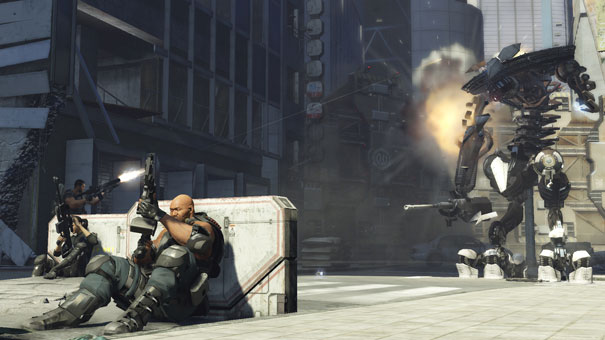
You’re in (neo) Tokyo to investigate the sinister Amada Corporation, which has allegedly been experimenting with creating hollow children (one of whom dramatically shows up in the United States). So you start trudging through the slums below the pristine futuristic city, picking up the rest of your colours-of-the-rainbow rust crew as you go. There are Brits, Chinese and French..men, and while precariously bordering on the stereotypical (that’s you, Big Bo!), the script always manages to make them interesting enough to care about. You’ll grow attached to your squad even though a couple of them are pushed to the wayside by the end of the game.
The game also does an excellent job of varying your squad, sometimes sending out three or four of your team alongside you. You almost always get to decide whom to take with you, but there are sections where your selections are sometimes restricted by the plot. There’s also a fairly rudimentary set of squad voice-commands at play as well. Have a microphone equipped and you’ll be able to shout orders (or inanities) at your squad. There’s a large-ish library of recognized words and phrases in the game although the responses you may get will often be unspecific but occasionally quite humorous. Gaming has always had a problem with voice-recognition tech and Binary Domain doesn’t change anything on that front. It’s a bit of a bother to set up and occasionally doesn’t work.
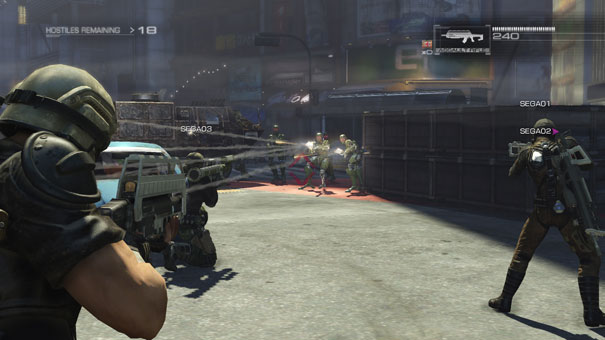
Thankfully you can fall back on the L2 button, which lets you call orders from an onscreen menu. While this works much better, it’s unfortunate that there were no voice-overs recorded (for Dan) for these commands. Each squad member also has a ‘trust’ gauge linked to your conversations with them. The game sometimes pauses for in game chats, and there are conversations during gunfights as well.
The more you work with your squad, help them out in combat and answer their questions right, the more they trust in you. The higher the trust, the more they’ll help out and obey your squad commands in battle. Low trust ratings mean stubborn squad mates refusing to make themselves useful when you need them the most. It would have been nice however, if there was a tangible change in the story thanks to how much your squad trusts you.
Once you’re done talking, you’ll be hugging cover, using the d-pad to change between a pistol, current primary and secondary weapon, and current grenade type, and picking up health packs and the like. You can vault over obstacles, perform evasive rolls, slink between cover, blind fire and sprint, among other things. There’s also a melee button in there, but the game really cries out for meatier and more varied melee animations.
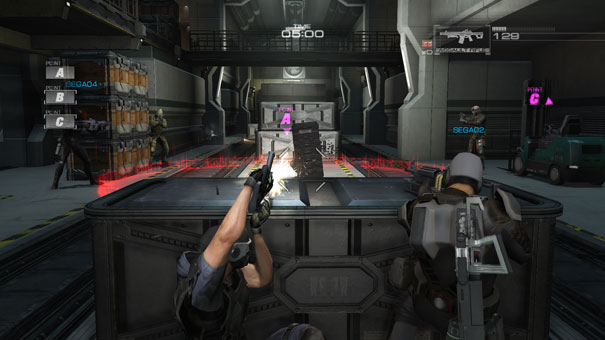
You’ll also find shop terminals scattered around the world that let you buy ammo, weapons and upgrades for you and your squad. The upgrade system is unique in that you buy tetroid shaped nanomachines that you need to slot into place in a 3×2 grid. It’s an interesting way to get the gamer to think about what upgrades they want to slot in so it’s rather unfortunate that the concept wasn’t given more room to grow. I would’ve liked to see more upgrades and slots, for instance. You can also level up primary weapons, thereby increasing weapon damage, ammo capacity and so forth.
The gameplay itself is amazing fun, and a lot of that has to do with the enemies you fight. Your robot foes are a blast (pun intended) to gun down, their shells breaking apart gloriously thanks to the magic of physics. You can also gun down specific limbs causing them to crawl towards you or even take off their heads to make them attack their own. It just never gets old. There’s a lot of enemy variety between chapters as well, and the boss fights are a class apart. They’re all awe inspiring and unique in the strategies you’ll need to employ to take them down, and never frustrating enough to make you want to stop playing. Certain other developers would do well to get their notebooks out.
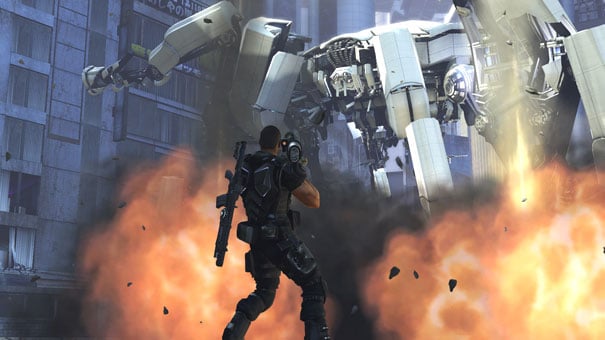
The campaign should take you ten hours to play through and is perfectly paced. There’s also a chapter select option unlocked on completion, which is excellent considering how much fun the game is. The standard cover-based TPS combat is routinely punctuated by vehicle sections, on rails sequences or insane set pieces that somehow manage to play out without altering your in-game perspective or taking you out of the experience. It’s all very classy and a blast to play (and replay). There are also interludes between levels that let you walk around mini-hubs and converse with NPCs. The story itself is brilliantly old-school Japanese, with love, betrayal and a bunch of twists near the end. There are allusions to (robot) racism and extra-national interference from a certain superpower, but the game never derails from its action template to ponder on them for too long.
Binary Domain also looks great. There’s a ton of detail in the gameworld and next to no flaws worth nitpicking over. The soundtrack is also suitably epic and the voice cast is at the top of their game. You can sense that they’re having fun with the material. What I would have liked though, would have been to spend more time in the lower sections of Tokyo. There’s a certain charm in trudging through a dilapidated Shibuya.
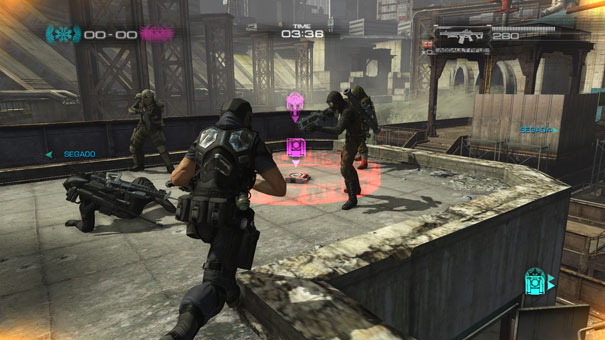
While the campaign is surprising in how good it is, the same can’t be said about the game’s multiplayer modes; although it clearly isn’t from a lack of trying. There’s an unusually large selection of competitive game types as well as a cooperative horde-style mode to pick from. And while the game mechanics are perfectly workable in a multiplayer context (minus the robotic dismemberment, sadly), you have to wonder whether the quantum of effort that went into creating them was worth it when the whole world and their dog would rather play Battlefield or Call of Duty instead. Community longevity aside, perhaps a better use of the resources would have been to beef up the game’s single player campaign with more interactivity, customization, locations and levels.
Conclusion
Binary Domain was always going to be a hard game to sell. When you do get down to playing it though, you’ll find a surprisingly polished and fun shooter that’s easy to love. It’s got a lot of heart, which perhaps in a subversive way mirrors the fictional story it tells. You’d do well to root for it.
